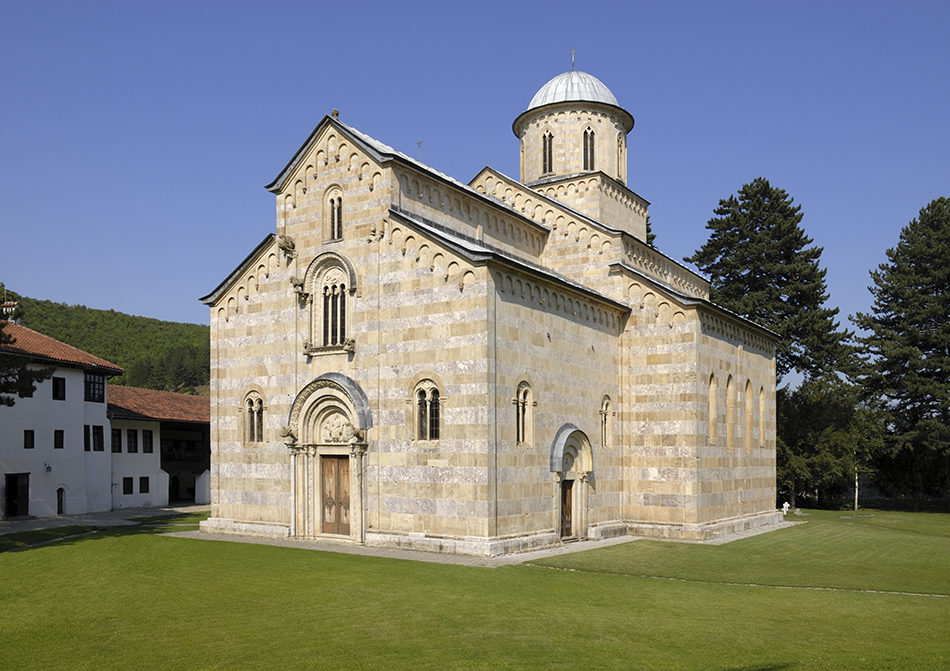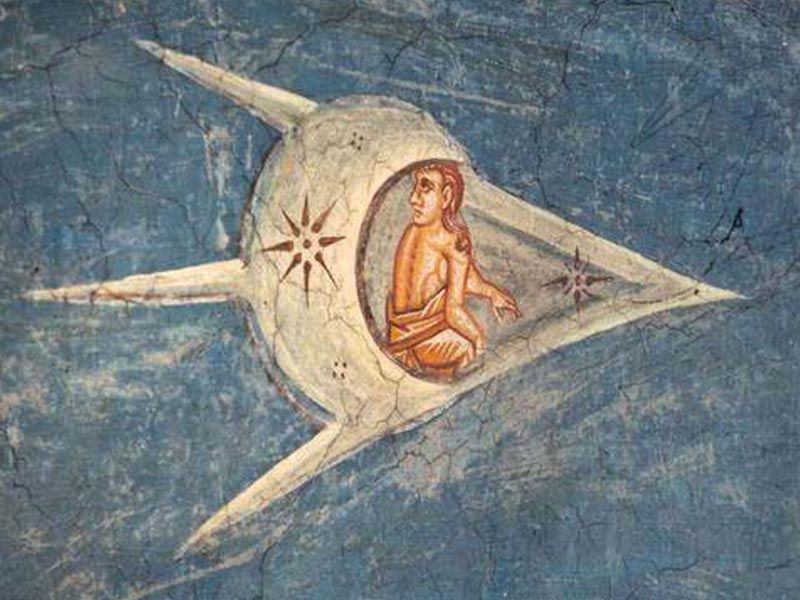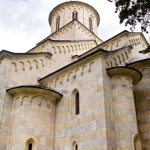Visoki Dečani or simply Dečani is a medieval Serbian Orthodox Christian monastery located near Decan, Kosovo and Metohija, Serbia. It was founded in the first half of the 14th century by Serbian king Stefan Dečanski.

The Visoki Dečani monastery is located by the Dečanska Bistrica river gorge at the foot of the Prokletije Mountains, in the region of Metohija. It is located about 2 kilometres from the town of Deçan. The monastery is managed by the Serbian Orthodox Eparchy of Raška and Prizren.
The monastery has been under the legal protection of Serbia since 1947with a designation of Cultural Monument of Exceptional Importance. Also, it is part of the World Heritage site named Medieval Monuments in Kosovo.
History
Construction began during the reign of Serbian King Stefan Dečanski in 1327 and the original founding charter from 1330 has been preserved. Dečanski’s son, Stefan Dušan, seized the Serbian throne in 1331 and had his father strangled to death in the Zvečan Fortress shortly afterwards. Dečanski was buried in the still incomplete Visoki Dečani monastery in 1331 and its construction was continued by Dušan.

The monastery’s main architect was Fra Vita, a Franciscan friar from the Montenegrin coastal town of Kotor. Construction of the monastery lasted for a total of 8 years, and ended in 1335. The wooden throne of the hegumen (monastery head) was finished at around this time, and the church interior was decorated. Dečanski’s carved wooden sarcophagus was finished in 1340.
15th–19th century
The Turkish army guarding Visoki Dečani, around 1904.
Bulgarian writer Gregory Tsamblak, author of the Life of Stefan Dečanski, was the hegumen (monastery head) at the beginning of the 15th century. The painter-monk Longin spent two decades in the monastery during the second half of the 16th century and created 15 icons with depictions of the Great Feasts and hermits, as well as his most celebrated work, the icon of Stefan Dečanski. In the late 17th century, the Ottomans plundered the monastery, but inflicted no serious damage. In 1819, archimandrite Zaharija Dečanac became Metropolitan of Raška and Prizren.

Crucifixion of Christ, detail, fresco at Visoki Dečani Serbian Orthodox monastery, 14th century
20th and 21st century
During World War I, the monastery’s treasures were plundered by the Austro-Hungarian Army, which occupied Serbia between 1915 and 1918. The monastery fell within the territory of the Italian-ruled Albanian Kingdom during World War II, and was targeted for destruction by the Albanian nationalist Balli Kombëtar and Italian fascist blackshirts in mid-1941. The Royal Italian Army responded by sending a group of soldiers to help protect the monastery from attack.
The monastic treasure was exhibited in the rebuilt medieval refectory in 1987. The monastery’s monks sheltered refugees of all ethnicities during the Kosovo War, which lasted from March 1998 to June 1999.
During the violent unrest in Kosovo on 17 March 2004, KFOR defended the monastery from an Albanian mob trying to throw Molotov cocktails at it.
On 2 July 2004, the monastery was declared a World Heritage Site by the United Nations Educational, Scientific and Cultural Organization (UNESCO).
UNESCO cited it as “an irreplaceable treasure, a place where traditions of Romanesque architecture meet artistic patterns of the Byzantine world.”The monastery, along with all other Serbian Medieval Monuments in Kosovo and Metohija, was added to the UNESCO list of endangered World Heritage sites in 2006.
Suspected Kosovo Albanian insurgents hurled hand grenades at the monastery on 30 March 2007, but caused little damage. In recent years, the situation around the monastery has stabilized and it has reopened to visitors.

Architecture
The church has five-nave naos, a three-part iconostasis, and a three-nave parvise. With the dome, it is 26 m high. Its outer walls are done in alternate layers of white and pink marble. The portals, windows, consoles, and capitals are richly decorated. Christ the Judge is shown surrounded by angels in the western part of the church. It’s twenty major cycles of fresco murals represent the largest preserved gallery of Serbian medieval art, featuring over 1000 compositions and several thousand portraits.
Heritage site in danger
Dečani Monastery is one of four World Heritage medieval monuments in Kosovo and Metohija designated as a heritage site in danger. Since the arrival of KFOR peacekeepers in the region in 1999, attacks on the Monastery have increased exponentially.
Dečani Monastery is currently under 24/7 guard from KFOR. Of the four medieval monuments in Kosovo and Metohija that are designated as a heritage site in danger, Dečani is the only one under direct guard from KFOR.


Valuable info. Fortunate me I discovered your web site by chance, and I’m shocked why this accident did not came about earlier! I bookmarked it.
Someone essentially help to make severely articles I might state.
This is the first time I frequented your website page and so far?
I amazed with the analysis you made to make this
particular post amazing. Magnificent task!
Thank you so much! Cheers!